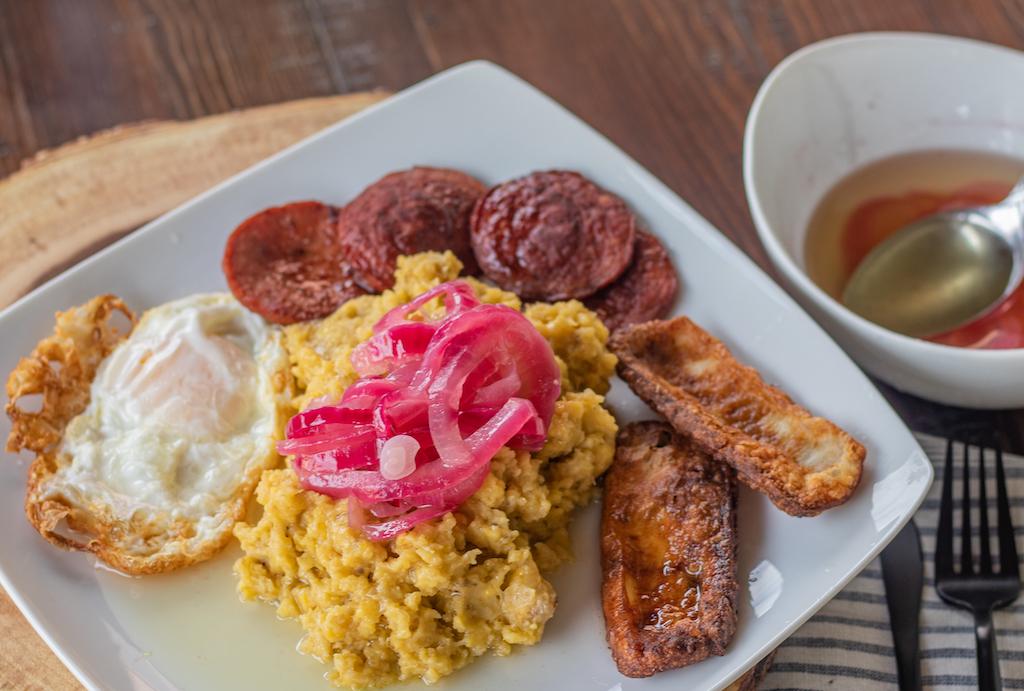There are dishes that seem to be an integral part of a particular culture. When speaking about the traditional cuisine of the Dominican Republic, Mangu is the dish that perfectly represents the culture of the entire Caribbean region. This dish is made of mashed green bananas with red onions stewed in vinegar sauce, fried cheese, eggs, and grilled salami (Agaronov et al., 2019). I have chosen this dish because it reminds me of the community in which I grew up and which is important for me. I started eating it as a child and I have nice memories connected with this dish. My weekends always started with a hearty breakfast, and Mangu was one of the main dishes that my mother prepared.
To cook Mangu, we need four green bananas, one large red onion, four tablespoons of butter, two tablespoons of olive oil, 1 tablespoon of fruit vinegar, salt, and water. Additionally, we need to fry salami, cheese, and eggs. The first thing we need to do is to peel the bananas and cut them into eight pieces. We put them into the container with water and 2 teaspoons of salt and let them boil (Agaronov et al, 2019). After the bananas become soft, we need to add oil and mash them. After getting a banana puree, we take an onion, cut it into thin slices, fry it with olive oil, season it with fruit vinegar and salt, and add to the banana puree. Then we may add salami, fried cheese, or scrambled eggs. It takes just up to half an hour to prepare Mangu, so it is easy to cook, and the ingredients are affordable.

Mangu is not just a Dominican dish, but a tradition that represents the eating habits of the whole nation. This dish has a deep-rooted history and its name is of African origin. Green bananas or plantains arrived in the Dominican Republic together with the first African slaves. Different dishes with mashed bananas are part of West African cuisine, and Mangu is not an exception. Its place of origin is Congo, where it is called Mangusi, and its history is closely connected with the slave trade. Thus, it can be said that African slaves were the first who introduced this dish to the Dominican Republic.
Reference
Agaronov, A., Entwistle, T., & Leung, M. M. (2019). From the lunch table to the family table: A grounded theory approach to understanding urban adolescents’ experiences of food culture mismatch between school and home environments. Ecology of Food and Nutrition, 58(1), 23-44.